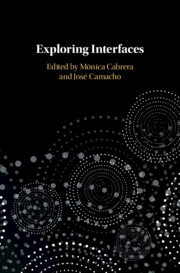II - Syntax–Semantics Interface
Published online by Cambridge University Press: 03 August 2019
Summary
Polarity-sensitive items are a peculiar kind of linguistic object. As Israel (2004, p. 207) notes: they are a class of items “which do not themselves express negation or affirmation, but which are restricted to sentences of one or the other polarity.” Broadly speaking, polarity items are expressions whose distribution is sensitive to contexts that express contradiction, contrariety, or reversal (Israel, 2004).
Idioms are also peculiar kinds of objects that have complex syntactic structure but behave like individual lexical units. It turns out that many polarity-sensitive items are idioms, and that intersection provides an interesting insight about both categories, which I will explore in this chapter.
- Type
- Chapter
- Information
- Exploring Interfaces , pp. 109 - 208Publisher: Cambridge University PressPrint publication year: 2019

